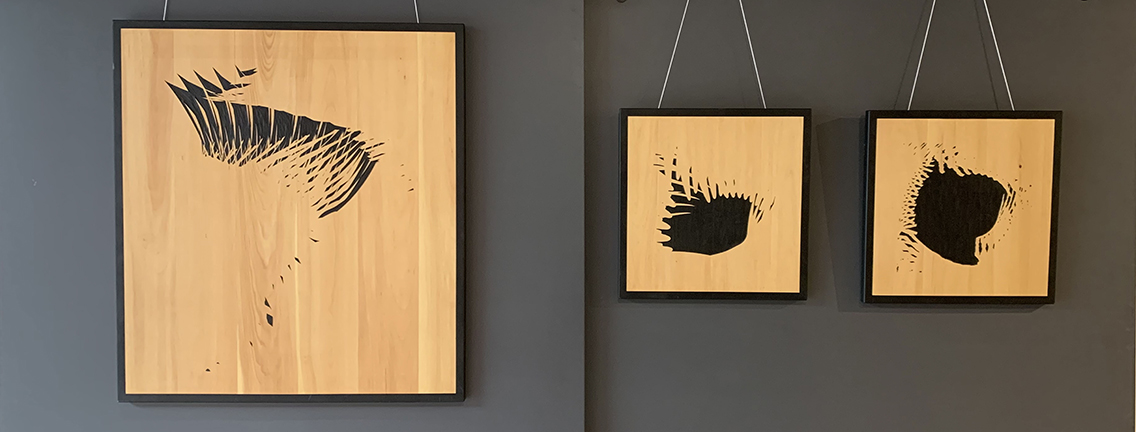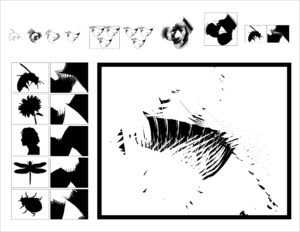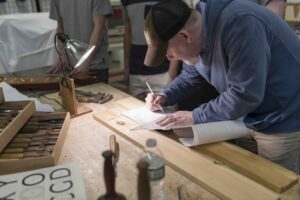
Reed Hayden
“I see the nature of existence as something that includes the human organism but is not constrained or defined by it.” – Reed Hayden

Reed Hayden is an artist from coastal Maine who draws primary inspiration for his work from the practice of Zen and the study of cognitive evolution. His medium of choice is wood and his pieces range from constructed abstract forms to incised graphic compositions. He is apart of of the 2020 cohort that has participated in the exhibition show APOGEE. Learn more about APOGEE here: APOGEE
Artist Statement
The intent of my work is to explore how I understand and experience existence. Although the belief that every individual is part of a greater entity is central to many theories of existence, there is also the idea that each individual is a unique manifestation of that entity. This idea suggests that in order to understand existence one’s exploration must be turned inward. One must use the individual experience as a guide to reveal the nature of our existence. In this way, my work is the manifestation of an internal dialog and an external expression. A process in which research produces a question and that question is then meditated upon. This meditation bridges the internal and external worlds. The process of working through paradoxical realization and insights generated from the interplay of reflection and expression produces the artifact of the exploration. These artifacts not only reflect the individual’s efforts but are produced by utilizing the proclivities of the individual, the unique manifestation, that is engaged in the process. There is an understanding that the greater entity has manifest in the world through the individual with a certain set of predispositions. The conceptual framework that points to individual experience as the key to understanding and the acknowledgment of the predispositions of that individual is honored and utilized in the meditation that in this case results in an art object. The designs of these woodcarvings are the abstract results of models which represent and investigate cognitive systems. The non-representational nature of the work is intended to provide the viewer with the opportunity to have a direct non-conceptual experience with an art object.

https://vimeo.com/showcase/7210839/video/425980715
Watch the video below to hear from the artist himself.
[vimeo 425980715 w=640 h=360]
https://vimeo.com/showcase/7210839/video/425980715
https://vimeo.com/showcase/7210839/video/425980715
https://vimeo.com/showcase/7210839/video/425980715
https://vimeo.com/showcase/7210839/video/425980715
https://vimeo.com/showcase/7210839/video/425980715
Learn about what is next for Reed Hayden:
“Many art practices like many other endeavors attempt to address “human problems”. What I mean by this is that much of contemporary art deals with social issues around gender, race, and culture. These are certainly important issues that need to be addressed in our time. I would say however that these issues are human issues, and although they are a component of our shared reality, ultimately they do not address the questions that I wish to address in my personal practice. What I would like to consider here is if it possible to create an art practice that addresses the root of existence? Please notice that I did not say human existence. I see the nature of existence as something that includes the human organism but is not constrained or defined by it. Having said that it is obvious that we find ourselves within this human experience and we must first understand what this means in order to uncover what lies beyond it. In this spirit and with an eye toward understanding I have engaged processes that attempt to model and investigate what it means to experience the world as a human being and to see if this unique human perspective is the powerful tool of understanding it seems to be or if it, in fact, creates a rich and powerful delusion that blots out other possibilities. I guess I have “tipped my hand” a bit with this last statement. I will admit that I believe this humanistic view of reality is problematic and limiting. This belief however is the impetus behind my earnest attempt to build a research and artistic practice that looks deeply at the qualities of human perception and its supposed limitations.”

